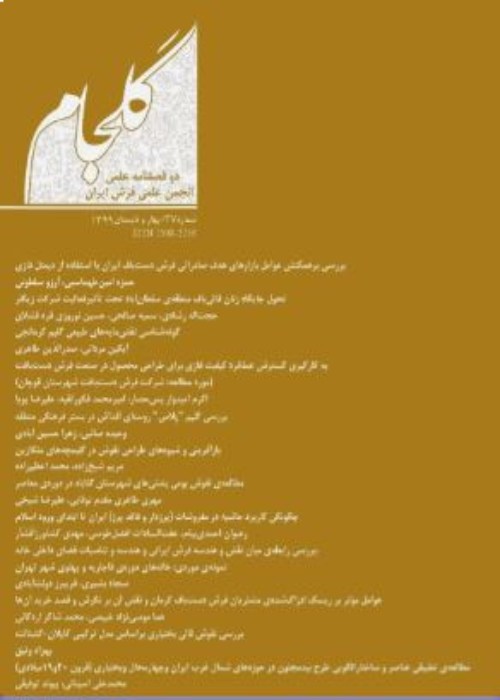Rereading Houshang Shah's carpet with Western diplomats from the perspective of social semiotics
One of the rugs of Houshang Shahi, which has some different visual elements from other rugs in this category, is a rug called Houshang Shah with Western diplomats. The simultaneous presence of the mythical king of Iran and the foreigners in a modern dress in this rug, as well as how it can be related to the active elements of this text, is an issue that has been less considered so far. The main hypothesis of the research is that the visual elements of this rug have features and meanings that by referring to the related pretexes, it is possible to read the text, understand the communication aspects of the actors and its social interpretation. The aim of the research is to gain an understanding of why the past and the present are intertwined, to identify the distinct visual elements that exist, to understand the relationships of the actors, and to identify the pretexts that have influenced the designs of this rug. Research method and theoretical framework of this research is the method of social semiotics of the image of Gunter Kress and Theo van Leeuwen. The main results of this article include changing the time of the inscription on the carpet, the impact of objects represented from the royal thrones and the architecture of the marble columns in the Qajar era, reproducing the concepts of Farah Izadi and the qibla of the world, wishing to return to the authority of mythical kings Influence of pre-texts such as ancient lithographs, Iranian painting, classical literature and Persian folk tales, recognizing the reasons for proximity and the relationship of heterogeneous actors with possible scenarios, the similarity of the emergence of elements of modernity with the court, the relationship of choosing Houshang Shah as The first legislator with the current of legalism in Iran, the inspiration of the inner border of the carpet from the margins of printed works, the importance of composition and accuracy in using colors and lines in creating meaning, classification and classification of characters, the effect of framing in showing our concept And another and the importance of representing the image in the Qajar era.
- حق عضویت دریافتی صرف حمایت از نشریات عضو و نگهداری، تکمیل و توسعه مگیران میشود.
- پرداخت حق اشتراک و دانلود مقالات اجازه بازنشر آن در سایر رسانههای چاپی و دیجیتال را به کاربر نمیدهد.


